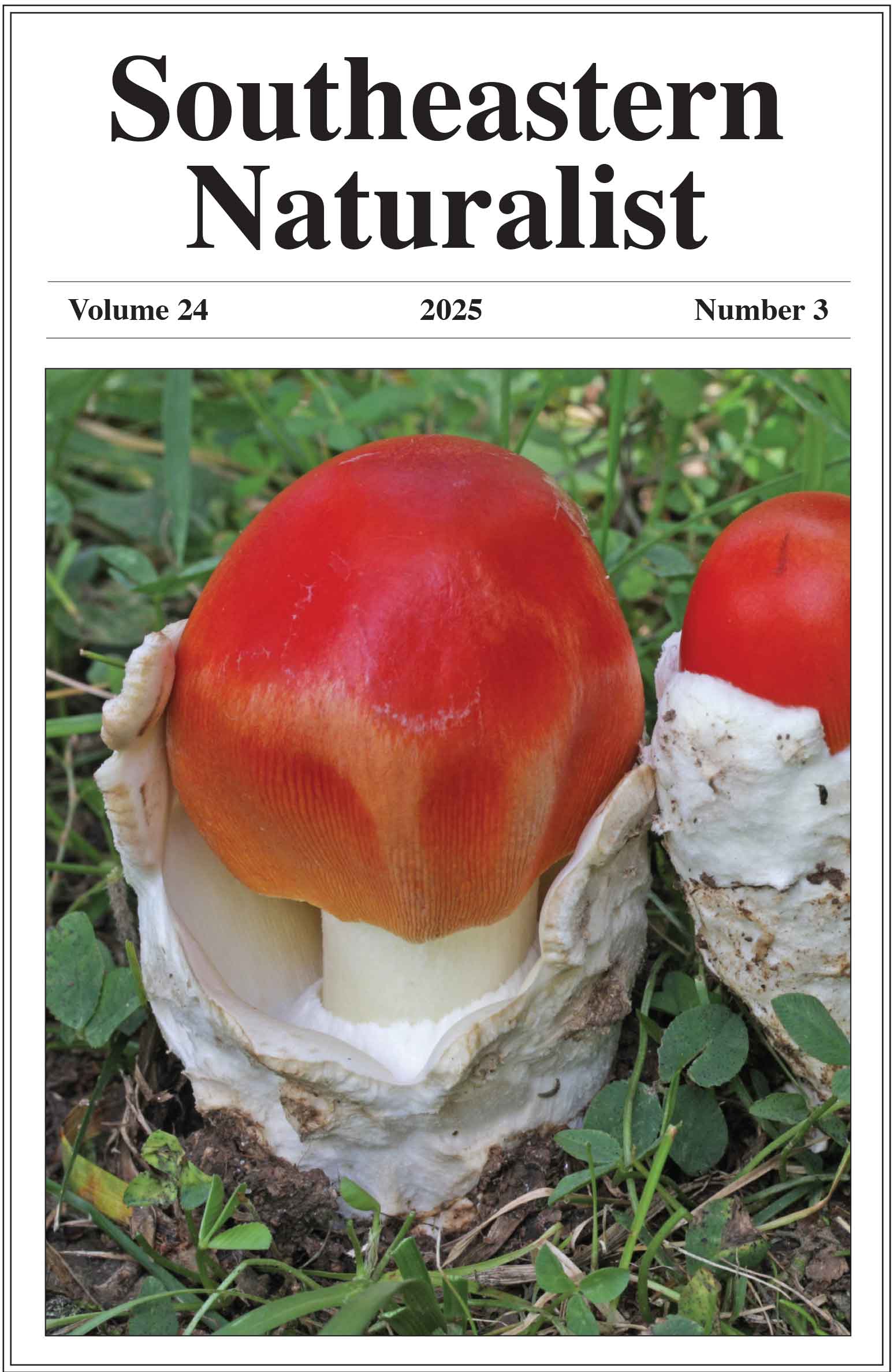High Genetic Diversity and Low Differentiation in Colonized Coyote Populations Across South Carolina
Jordan L. Youngmann1,*, Stacey L. Lance2, John C. Kilgo3, Charles Ruth4, Jay Cantrell4, and Gino J. D’Angelo1
1Daniel B. Warnell School of Forestry and Natural Resources, University of Georgia, Athens GA 30602. 2Savannah River Ecology Laboratory, University of Georgia, Aiken, SC 29802. 3USDA Forest Service, Southern Research Station, New Ellenton, SC 29809. 4South Carolina Department of Natural Resources, Columbia, SC 29201. *Corresponding author.
Southeastern Naturalist, Volume 23, Issue 3 (2024): 366–384
First published early online: 3 August 2024
Abstract
Canis latrans (Coyote) is a highly mobile, generalist species that occupies a wide variety of habitats and ecoregions across North and Central America. Assessments of population genetic diversity and structure among the recently colonized populations of Coyotes in the eastern US have been conducted at broad spatial scales, revealing genetic structure concordant with immigration routes and high genetic diversity, or at local spatial scales, usually finding genetic panmixia. However, few studies have assessed eastern Coyote genetics at an intermediate spatial scale (i.e., state-level), which may be commensurate with the population dynamics of this mobile animal. We sampled 10 study areas across South Carolina during summer 2019–2020 using noninvasive genetic sampling and 10 microsatellite loci to identify individuals. We assessed genetic diversity and pairwise relatedness as well as genetic structure across our populations to determine whether there were landscape-level differences in genetic differentiation and the scale of Coyote population structure across the state. We found high levels of observed heterozygosity (0.599–0.872) and allelic richness (3.99–5.12) across our sites but low levels of relatedness. We observed low genetic differentiation (pairwise FST = 0.010–0.066) and insignificant isolation by distance with limited evidence of genetic structure. Coyote populations seem to be operating at a spatial extent greater than South Carolina, and gene flow is likely maintained by unrelated, transient individuals. Future research and management of Coyotes in the heterogeneous landscapes of the southeastern US should account for the geographic scale that populations encompass.
![]() Download Full-text pdf (Accessible only to subscribers. To subscribe click here.)
Download Full-text pdf (Accessible only to subscribers. To subscribe click here.)
Access Journal Content
Open access browsing of table of contents and abstract pages. Full text pdfs available for download for subscribers.
Issue-in-Progress: Vol. 24( 4) ... early view
Check out SENA's latest Monograph and current Special Issue in progress:













 The Southeastern Naturalist is a peer-reviewed journal that covers all aspects of natural history within the southeastern United States. We welcome research articles, summary review papers, and observational notes.
The Southeastern Naturalist is a peer-reviewed journal that covers all aspects of natural history within the southeastern United States. We welcome research articles, summary review papers, and observational notes.